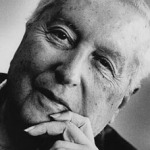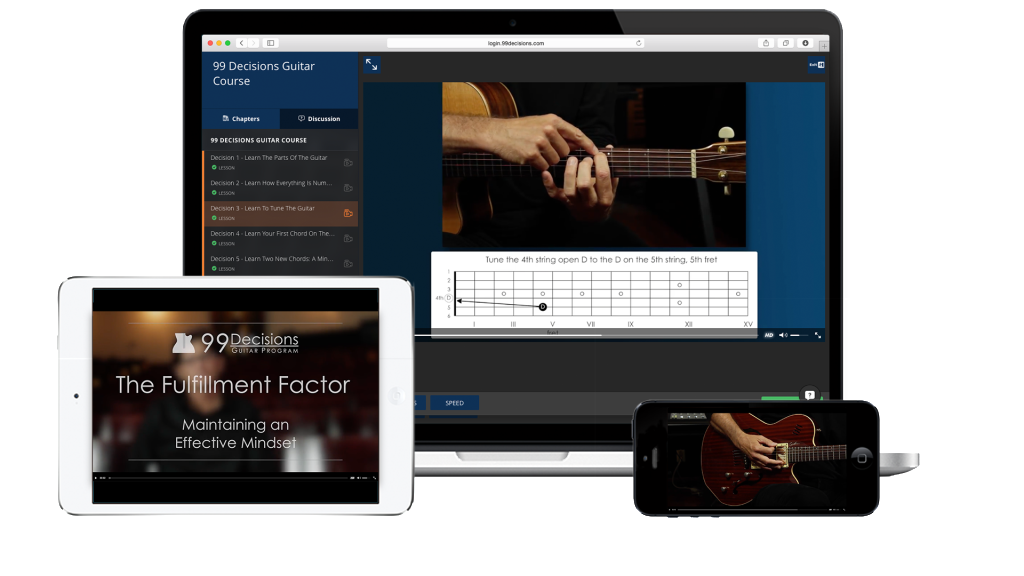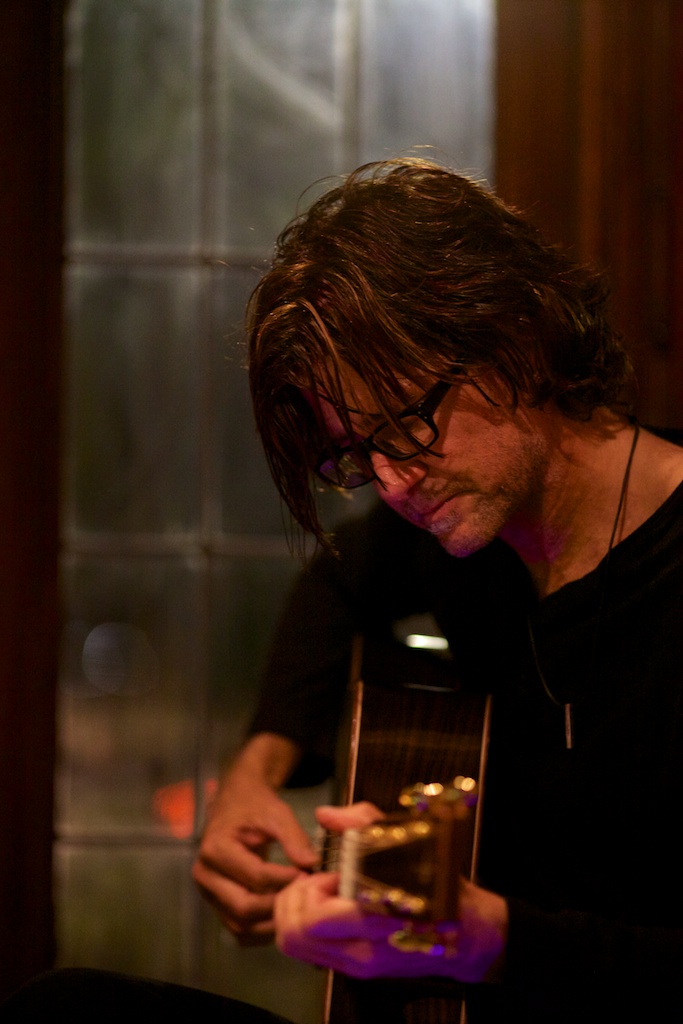Like many, I have my own list of “guitar heroes”…
• Jimmy Page
• John Scofield
• Jeff Beck
• Adam Rogers
• Ralph Towner
… and a bunch of others.
(yeah, I put some esoteric ones on there to make you think I’m really… esoteric)
But the science geek part of me also has a list of heroes…
• Daniel Levitin
• Chris Anderson
• Mihaly Csikszentmihalyi
• Malcom Gladwell (more of a sociologist)
• Ilya Prigogine
… and a bunch of others.
Ilya Prigogine was a Belgian Nobel Laureate noted for his work on dissipative structures, complex systems, and irreversibility. He came up with this cool model about chaos theory that could be applied to any system… a governmental system or a business system or the human body or a freeway system or the planet. It basically was a model about how when chaos ensues, the system either ceases to exist, reverts to its previous status, or it processes the chaos & comes out the other side as a more highly evolved version of itself.
Yeah, I know… you’re thinking, “Does any of this make me a better guitar player?”.
Well, of course it does.
Consistently practicing things you cannot do (chaos) until you can do them enables you to come out the other side with a more highly evolved version of yourself, the musician.
So today, let us look at a simple yet effective exercise that will create a profound shift in your ability to deal with change in speed while you play the guitar.
There is a systemic approach to experiencing the essence of rhythm that you can do with just about anything.
I don’t really have a name for this systemic approach yet so, by all means, feel free to offer one up after you’ve done it.
(make sure it sound really scientific like, “dissipative structures”, or… )
First, we must…
Establish the thing
Okay- you need something to play … something to practice.
It’s gotta be simple.
And it has to be a thing that you can play repetitively at various speeds.
• strumming steady down & up strums
• picking steady down & up strokes
• playing a scale pattern ascending & descending
• changing between two chords, one strum each
• or ?… you come up with something
So how about just two notes?…
Put your 1st finger on the 3rd string at the 5th fret.
Now put your 3rd finger on the 3rd string at the 7th fret.
Those are your two notes.
Got it?
Good.
(for convenience & brevity, I will from here on out refer to each note by its finger number)
Next, we must…
Play the Thing
Play the 1st finger.
Now play the 3rd finger.
Repeat… just keep playing each note back & forth.
Play the two notes at a comfortable speed… a medium speed.
Whatever you think is a medium speed, that is.
Don’t use a metronome yet. I want you to have a somewhat organic rhythmic experience here.
And don’t tap your foot either.
Okay, are you still playing those two notes back & forth?
Don’t stop… keep it going the whole time whilst I direct you in this little experiment.
Now I want you to play at exactly half the speed you were just playing.
You are doing this by feel. You are tapping into your innate sense of rhythm.
Okay, now go back to the original medium speed.
Keep it here for, like, thirty seconds or so.
Now go to half the speed again. You are striving to play the two notes half as fast.
(don’t say that too fast or it comes out, “half-assed”)
Now back to the original medium speed.
Continue to go back & forth between these two speeds a few times until you are comfortable.
You’re still playing, right?
Don’t stop.
Alright, go back to the original medium speed.
Next I want you to play the two notes at exactly twice as fast as the original medium speed.
Okay- I’m pulling over for a minute…
Here’s where you are going to find out if you chose a truly medium speed or not.
Since you didn’t know where I was going with this exercise when we started, you may have started at a speed that was comfortable for you, but now twice as fast as that medium speed is too fast for you to keep it together with the whole two notes back & forth thingy.
If this the case, just restart the exercise at a speed that is slower & then get comfortable with going back & forth between the new medium speed & half as fast as that.
Cool?
Okay, I’m starting the bus & continuing on now…
So here’s where we’re at…
You are toggling through three speeds now:
• Half as Fast
• Medium
• Twice as Fast
Again, do about 20-30 seconds each speed for a few minutes.
That’s right, you’re going for, “tall / vente / grande” thing here. Relative to these three rates of speed, you can think of it as slow, medium, & fast, if you’d like. We’re using the term medium to denote your starting speed.
Also, when you are toggling, it can be in any order… so make sure you experiment with fast / medium / slow and slow / fast / medium, etc., so you get to experience changing from any speed to any speed.
* Remember, you have to start at a realistic medium tempo so that you can pull off the twice as fast tempo!
Special note to those who think this is too easy of an exercise:
Add into the mix double the double speed & half the half speed…
• Half as Slow
• Slow
• Medium
• Fast
• Twice as Fast
Remember, you are dealing with exponentials here.
Let’s see how you handle toggling between 5 different speeds!
Notice I haven’t been using the term, “tempo“. I’ve been using the term, “speed“.
This is because if I package this exercise as a variation of tempi, it will detract from the simple nature of the experience. I want you to keep the thinking to a minimum & just use your innate sense of rhythm.
(tempi is plural for tempo, by the way… although it always sounds to me like some kind of shrimp dish)
You are not playing to a beat here, so technically there is no tempo to speak of. This change of speed could be perceived by you cognitively as either an exponential change in tempo, or it could be thought of as change in rhythmic subdivisions. We want it to be neither.
So don’t be tapping your foot!
The idea here was to make it sooooo simple that you could focus on the essence of what you need to do to make changes happen, which basically involves paying very close attention to the speed of the action & then halving it & doubling it & returning to the original speed, etc.
This activity seems simple enough, however the exercise can have a subtle, to not-so-sublte challenge to it, depending on what “thing” you chose to play. The point is for you to have a basic experience in rhythmic consciousness, meaning that you are developing the fundamental ability to change speed at will in an consistent & organized fashion.
I am a huge fan of really simple exercises like this which have the capacity for instigating profound change in one’s musicianship skills.
Sometimes, though it is somewhat of a tough sell to convince students about the efficacy of such efforts when the exercise is so basic & simple. But therein lies the beauty! We’re talking’ “wax on, wax off” here and if you know your Ralph Macchio movies, then you know it always turns out better in the end.
Alrighty, so just like a brilliant Belgian scientist, proceed to prove that you can apply this systemic exercise to any thing you can do on the guitar that involves rhythmic speed.




Leave A Response